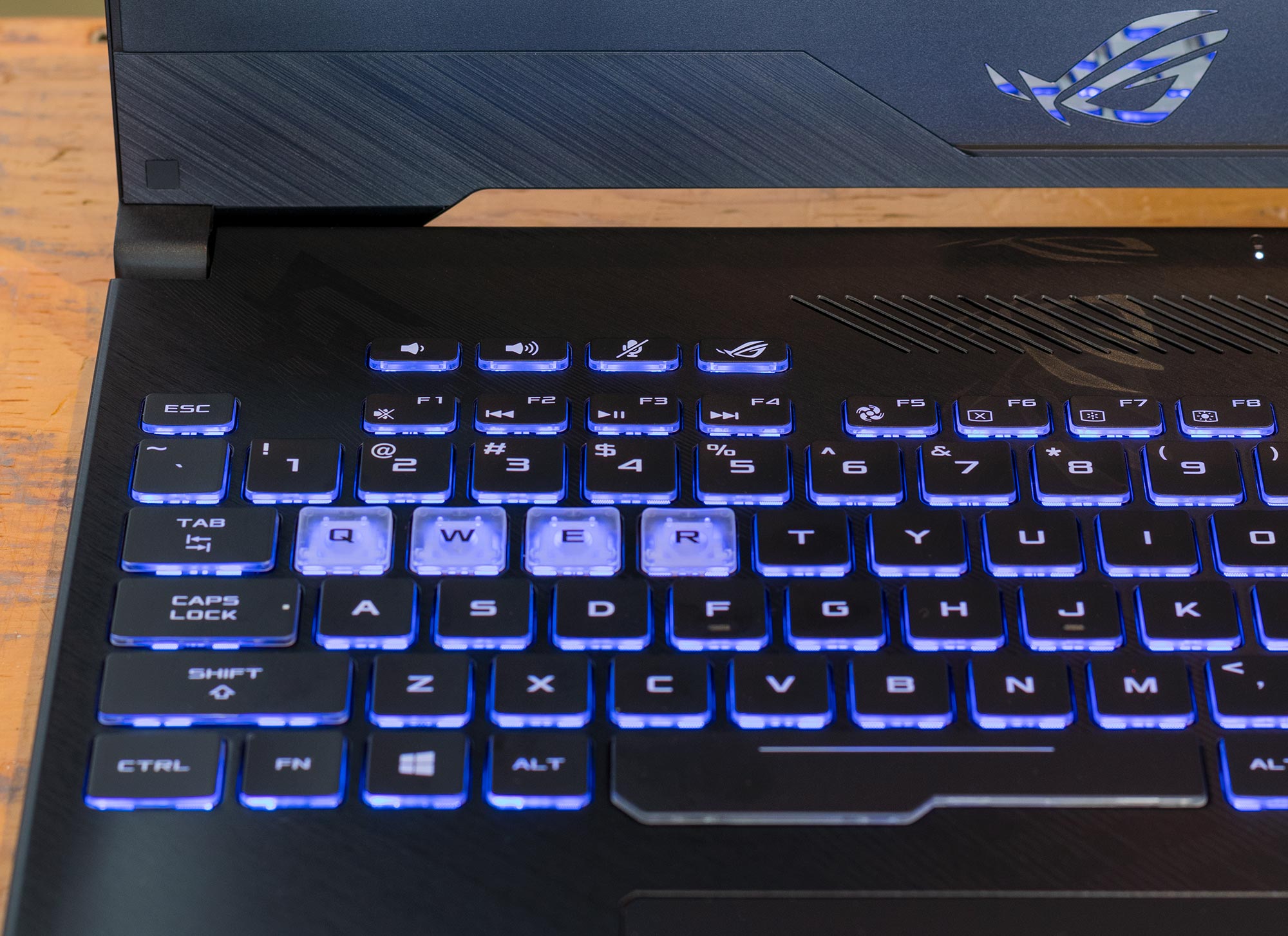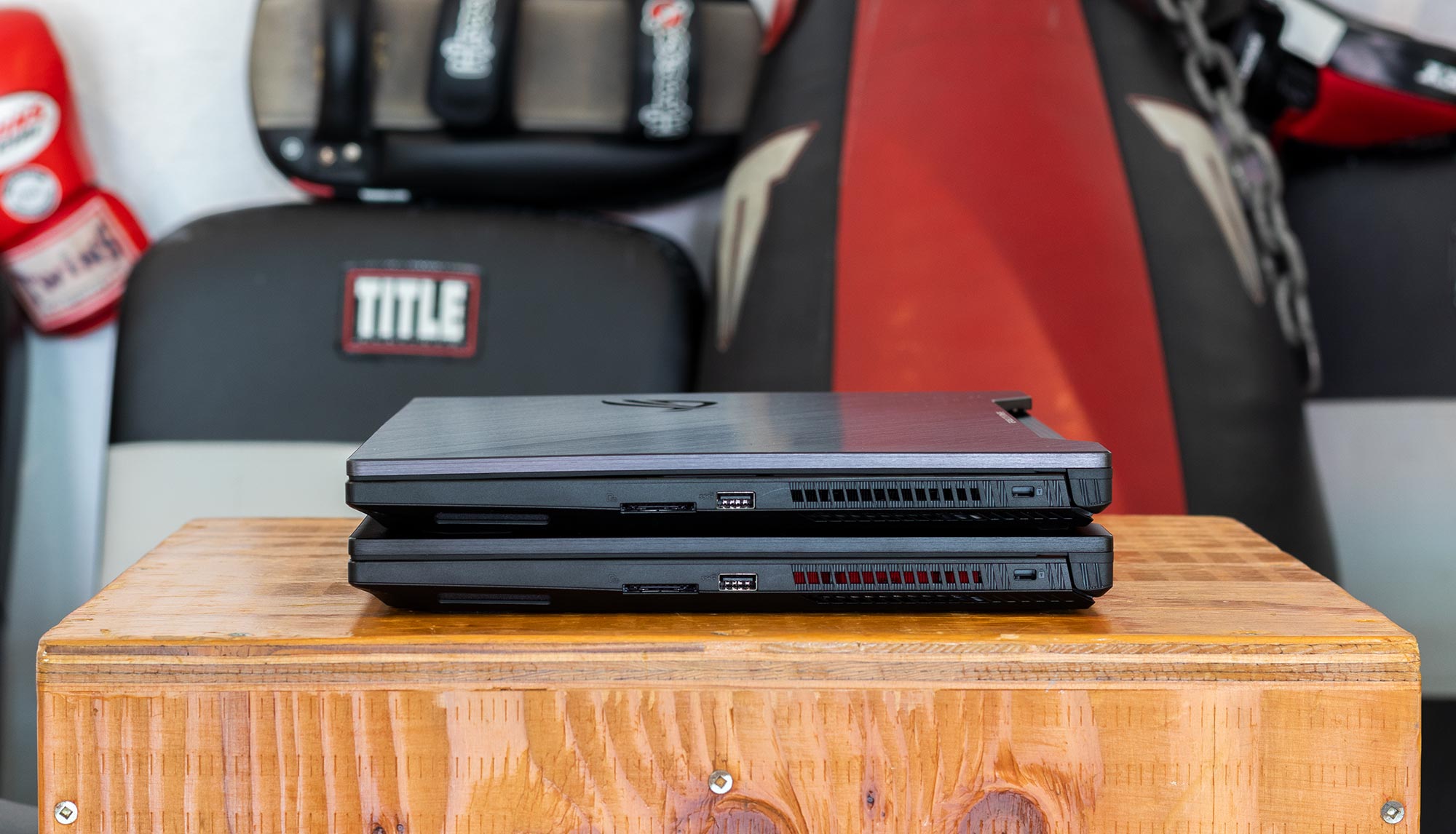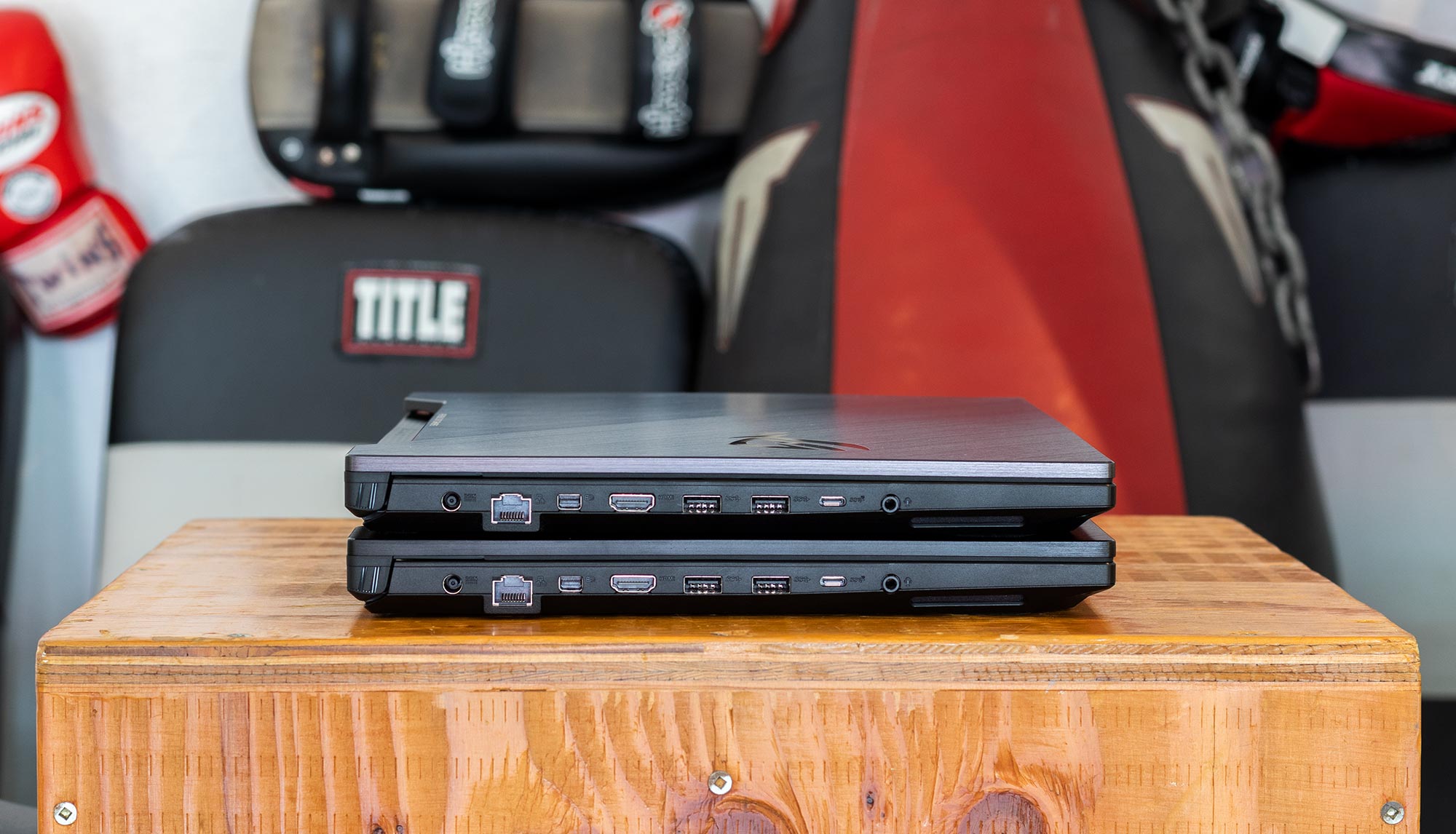Strix showdown: the Scar II and Hero II battle for the benchmark belt
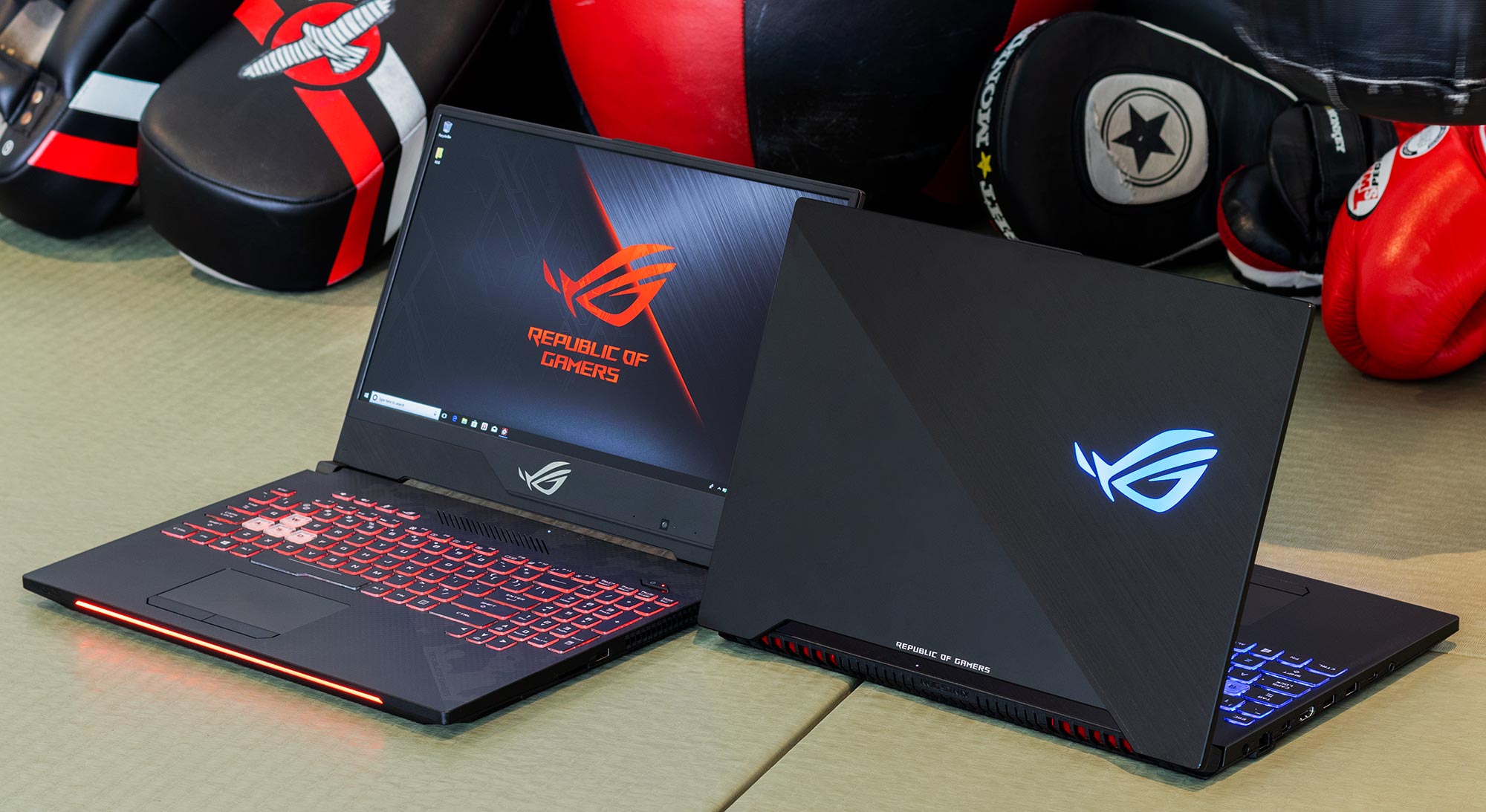
Ladies and Gentlemen, fans of esports gaming laptops. This is the moment you’ve been waiting for ever since the ROG Strix Scar II and Hero II debuted. The pair squared off at Computex 2018, setting the stage for an inevitable clash over sibling supremacy. They settle the score today in a nine-round battle through the latest games.
Both laptops are bred for competition. They come from the same updated Strix stock, which brings gloriously narrow bezels to an uncompromised gaming display. Intel’s latest Coffee Lake processors and NVIDIA’s GeForce 10-series graphics provide plenty of punch, while desktop-style keyboards and multi-antenna arrays enhance your tactile and wireless connections, respectively.
Despite these similarities, the Strix Scar II and Hero II have unique personalities. Each one embodies a different style, and the Scar is available with a faster GTX 1070 GPU that extends its reach. Let’s meet the contenders.
Tale of the tape
Both laptops weigh in at 5.3 lbs, clearing the way for a middleweight title fight. You can easily mistake them for welterweights at a glance, though. Thanks to narrow display bezels, the new Strix siblings occupy a surprisingly compact footprint that more easily squeezes into tight spaces and crowded bags. The wider bezel below elevates the screen for more comfortable viewing, which can reduce strain on your neck as the rounds wear on.
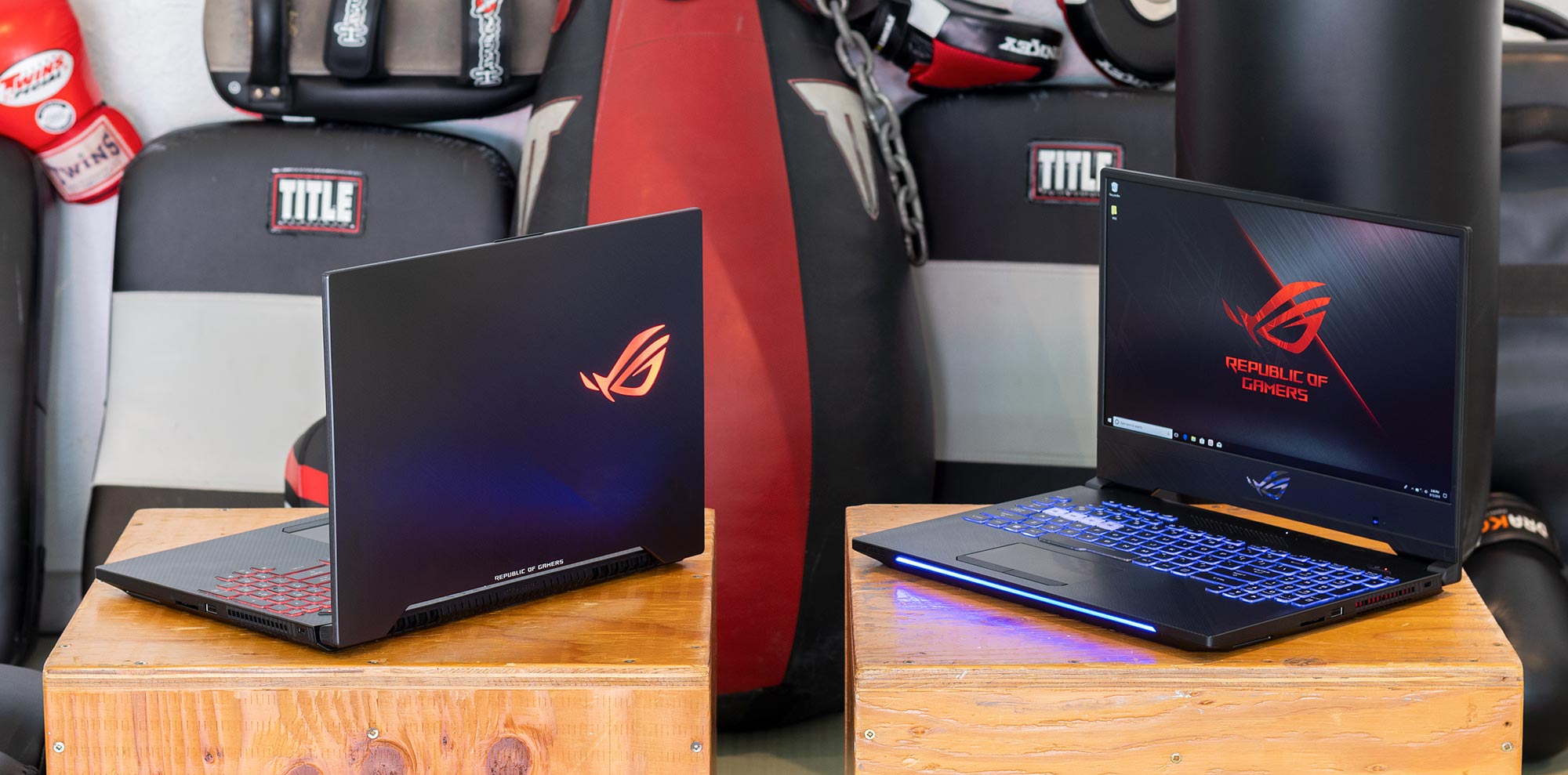
Despite slimming down, the display doesn’t miss a step. Its ultra-fast 144Hz refresh rate and 3-ms response time enable fluid movement and crisp visuals even in the midst of a frantic flurry. Unlike gaming displays that trade graphics quality for speed, the Strix’s IPS-type panel covers the full sRGB gamut with rich colors that stay true across wide viewing angles, so everyone who gathers around for the main event gets a good view of the action.
Keeping up with the display is largely on the graphics chip, which is where we find the most important difference for today’s bout. While the Strix Hero II is equipped with a GeForce GTX 1060 discrete GPU, the Scar II can be configured with a more muscular GTX 1070. The Hero is understandably an underdog as a result, but don’t underestimate its ability to keep up.

The flagship configurations from both camps pair the GPU with a Core i7-8750H processor with six cores and 12 threads ready for heavy lifting. Our HyperCool Pro system keeps temperatures under control for both chips, so you can slug it out all night without slowing down. Dual 12V blowers generate plenty of airflow, while anti-dust tunnels prevent particles from accumulating on the radiator fins and compromising cooling. Compared to the last generation, there’s an extra radiator to improve heat dissipation. Scar II configurations with GTX 1070 graphics (otherwise known as the GL504GS) also include additional heatpipes to deal with the increased thermal load generated by the GPU and power circuitry.
Distinct styles on the same body
The Strix family resemblance is clear, but each laptop puts its own spin on the formula. True to its FPS inspiration, the Scar II channels the battlefield with a camouflage-meets-fiber motif. Its gunmetal lid gleams under the right light, contrasting darker tones on the Hero II. While that laptop looks more understated from afar, closer inspection reveals bright red radiators peeking out from behind the exhaust vents. The Hero also wears hints of the cyber-text pattern that appears on other ROG hardware, including the new Huracan G21 desktop and recent Strix motherboards. The patterned effects on both are created with an IMR process that produces a smooth, durable finish that feels more premium than the price tag implies.
Translucent caps mark the most important keys for different game genres. The Scar sets apart the WASD triangle used in first-person shooters, while the Hero highlights the QWER row for MOBAs. Both have the same four-zone RGB backlighting for the keyboard as a whole, and the glow looks more refined thanks to a tweaked cap design that more evenly diffuses the pinpoint brightness produced by the underlying LEDs.
The new light bar on the front edge extends a personalized glow onto your desk, while the illuminated logo on the lid broadcasts your choice of colors to the surrounding area. They’re easy to control independently using the included ROG Gaming Center software, which includes profiles that activate specific lighting effects automatically when you launch your favorite games. Aura Sync adds another layer by synchronizing colors and effects with the RGB lighting in compatible peripherals like the ROG Gladius II Origin mouse and Delta Type-C headset.
While RGB lighting demands attention, the keyboard makes its case more quietly. Its desktop-style layout feels like home, complete with an expanded space bar provides a bigger target perfectly placed for my thumb. Dedicated hotkeys for volume and muting the microphone are within reach for quick adjustments mid-match, and I really like how the separated function row makes it easier to find my favorites: Alt+F4 to close windows, F5 to refresh web pages, and F12 to start logging frame times.
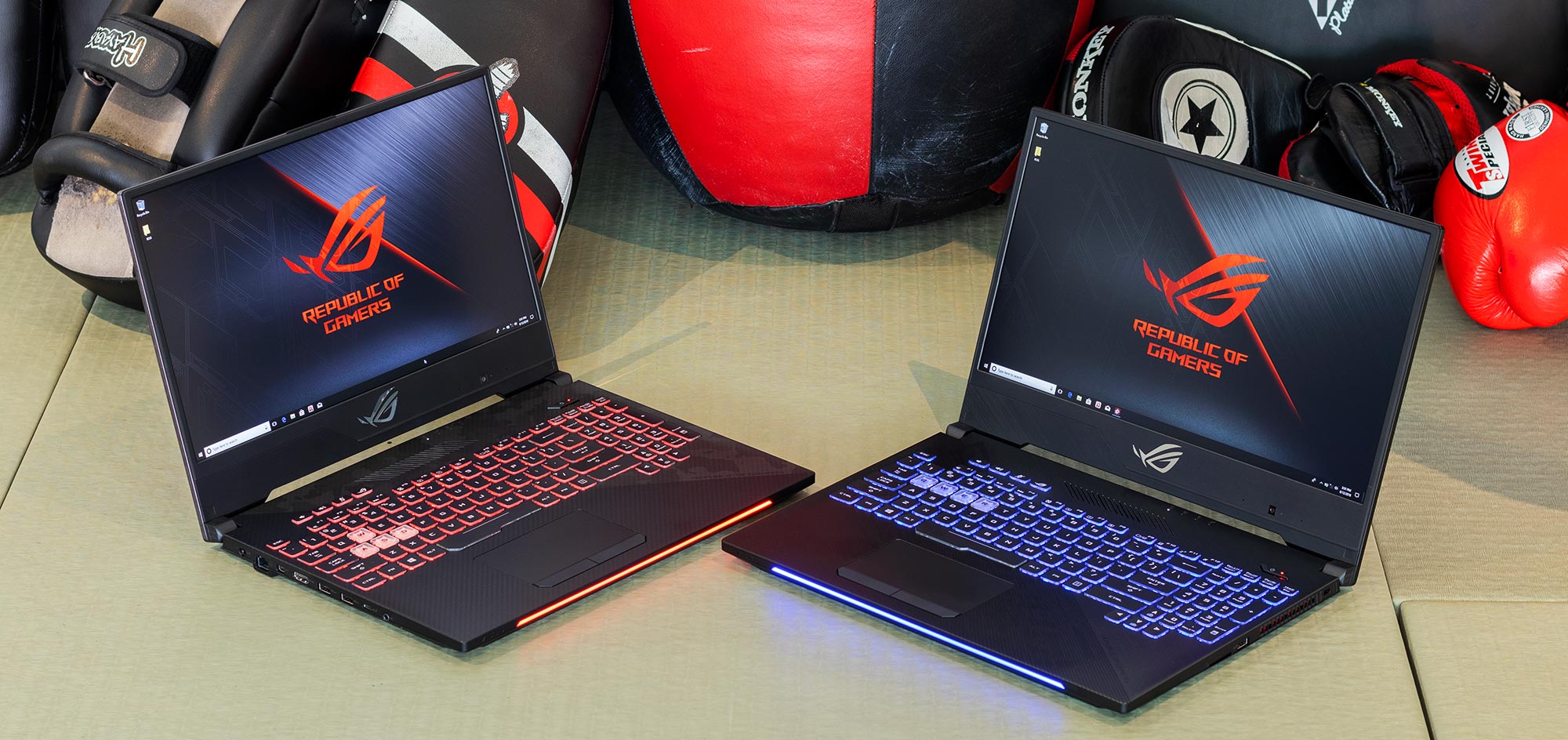
Touch gloves
Today’s bout takes place over nine rounds lasting 60 seconds each. Fraps and OCAT fill up the scorecards with individual frame times that we’ve translated to FPS for easy interpretation. Faster performance produces more frames, which is why the plots below are different lengths.
Warming up in the early rounds
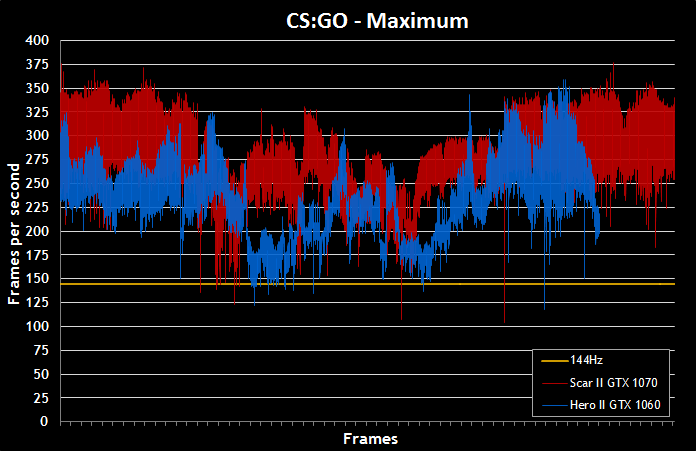
The first couple of rounds are really just a warm-up. Although CS:GO and Rocket League are wildly popular with both casual players and competitive esports, they hardly qualify as heavy lifting for modern GPUs. Both laptops comfortably push the FPS into the triple digits, with even the GTX 1060-powered Hero II slinging as many frames as the display’s 144Hz refresh rate can handle.
This is where the panel really shines. With new frames reliably appearing every 6.9 milliseconds and pixels changing in a fraction of that time, the fast pace of both games flows effortlessly. Impulses translate instantly into actions, and the constant motion is rendered with an engrossing clarity that puts me right in the zone. Narrow bezels heighten the experience by further focusing attention, allowing reality to fade into the periphery.
Straight punches down the middle
The middle rounds present an escalating challenge that clearly illustrates why this was never going to be a fair fight. Although the GTX 1060 and GTX 1070 differ by only ten points on the GeForce scale, the difference is much bigger under the hood. The 1070 in the Scar II has 2048 CUDA cores backed by 8GB of RAM and 256GB/s of memory bandwidth, while the 1060 in the Hero II steps into the ring with only 1280 CUDA cores, 6GB of RAM, and 192GB/s of bandwidth. This is an older, stronger Maxwell GPU beating up on his younger brother.
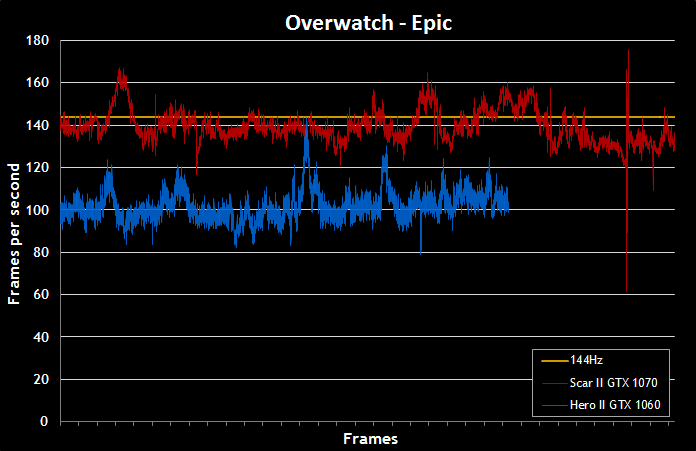
While the scorecards track the Scar’s ability to consistently throw more frames than the Hero, the battle looks a lot closer from the front row. With performance hovering around 100 FPS and the eye candy turned way up, Quake Champions and Overwatch deliver a potent combination of pristine graphics and smooth gameplay. Frame rates are similar in Destiny 2 and slightly lower in Wolfenstein II, where we couldn’t resist the call of ultra graphics. Even with the details cranked, there’s no obvious stuttering to pull you out of the action.
The GTX 1060 may be a game opponent, but the GTX 1070 is clearly one step ahead. It makes the Scar II feel sharper and more responsive when careening through a hail of rockets in Quake Champion. The faster you move and react, the more you notice the performance edge. The same holds true in the other games, where another trend starts to come into focus. During our test sequences, the lowest FPS for the GTX 1070 is within striking distance of the highest performance for the GTX 1060.
Going the distance
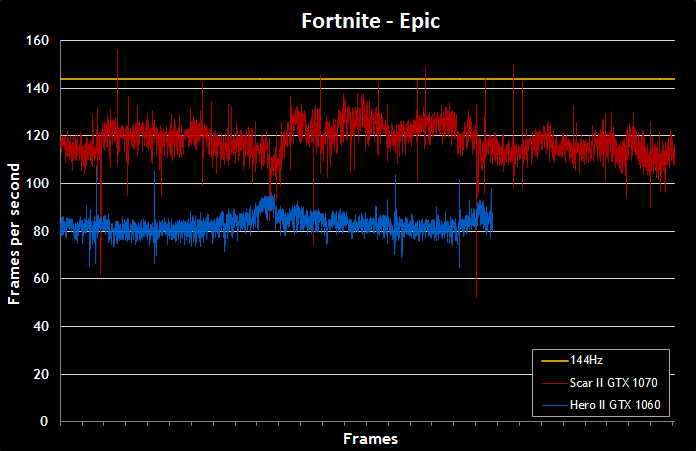
Stiffer graphics requirements in the later rounds take their toll on both laptops, but the Scar II’s additional GPU power gives it more capacity to absorb the damage and keep swinging. Fortnite’s epic graphics details live up to their name, and there’s little reason not to enjoy the longer draw distances and luscious vegetation with the GTX 1070 routinely cranking out close to 120 FPS. Performance barely dips into double digits, which is where the GTX 1060 lives full-time, though you can easily exceed 120 FPS with the details dialed back to high.
Similar stories play out in Project Cars 2 and Far Cry 5, where the Hero II spends most of its time around 80 FPS, and the Scar II largely exceeds 100. The difference is most noticeable for me while aggressively weaving through traffic in the opening corners of the Sakitto circuit, where the constant forward motion and cars jostling for position isn’t as silky at lower frame rates. The Hero II and its GTX 1060 still offer smooth performance in what is ultimately a very demanding game, but experience isn’t as seamless as with the more powerful GPU.
To its credit, the Hero hangs in until the end despite facing a higher-ranked opponent. Its performance is more consistent, too, with tighter frame-time distributions that make the gameplay feel even and predictable.
| ROG Strix Scar II GL504GS-DS74 | ROG Strix Hero II GL504GM-DS74 | |
|---|---|---|
| Processor | 8th Gen Intel Core i7-8750H | |
| Display | 15.6" IPS-type FHD (1920 x 1080) with 100% sRGB 144Hz refresh rate with 3ms GtG response time |
|
| Graphics | NVIDIA GeForce GTX 1070 8GB | NVIDIA GeForce GTX 1060 6GB |
| Memory | 16GB DDR4 2666MHz SDRAM | |
| Storage | 256GB M.2 NVMe PCIe SSD 2.5” 5400rpm 1TB SSHD |
256GB M.2 NVMe PCIe SSD 2.5” 5400rpm 1TB HDD |
| Wireless | 802.11ac 2x2 Wave 2 Wi-Fi Bluetooth® 5.0 | |
| Connectivity | 1 x USB 3.1 Gen 2 Type-C, 2 x USB 3.1 Gen 1, 1 x USB 3.1 Gen 2, 1 x mini DisplayPort 1.2, 1 x HDMI 2.0, 1 x RJ-45 jack, 1 x SD card reader, 1 x 3.5-mm audio combo | |
| Audio | 2 x speakers with smart-amplifier technology Array microphone |
|
| OS | Windows 10 Home | |
| Size | 36.1 x 26.2 x 2.61 cm | |
| Weight | 2.4kg | |
| Price (USA) | $1,999 USD | $1,699 USD |
| Availability (USA) | ASUS Store, Newegg, Amazon, B&H, ExcaliberPC, Mobile Advance, iBuypower, Xotic PC, HID Evolution, GenTech, CUK | ASUS Store, Newegg, Amazon, B&H, ExcaliberPC, Mobile Advance, iBuypower, Xotic PC, HID Evolution, GenTech, CUK |
A unanimous decision
The judges are unanimous: if you want the best gaming performance, the GeForce GTX 1070 available in the Strix Scar II is clearly faster than the GTX 1060 in the Hero II. Having more horsepower lets you reach the limits of the high-refresh display more easily and also provides additional headroom for more demanding games and VR experiences. But the scorecards also show that the GTX 1060 is extremely capable. The GPU punches above its weight, producing triple-digit frame rates in popular titles and smooth gameplay in demanding games.
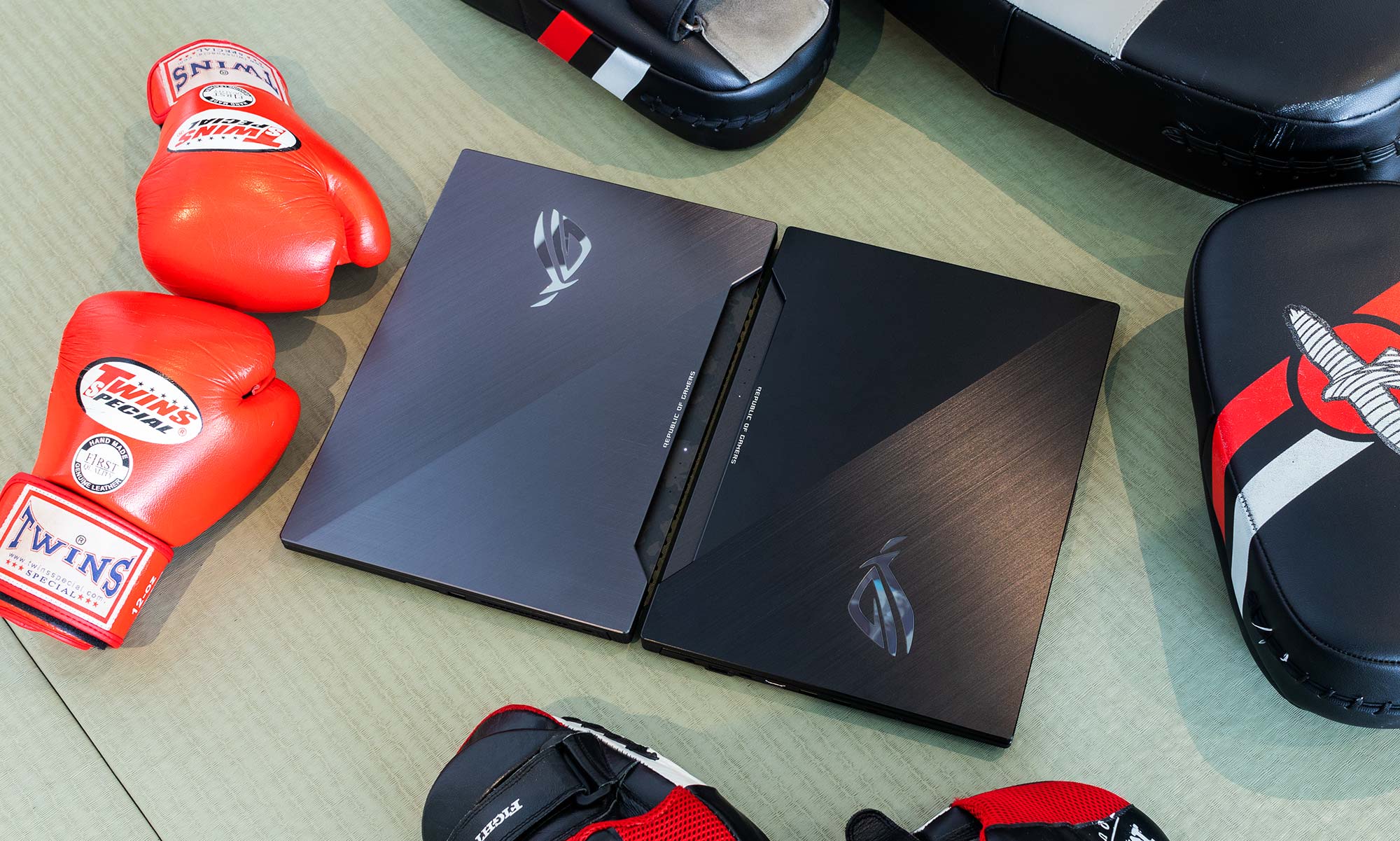
First-person shooters have steeper system requirements and benefit more from higher FPS, so the GTX 1070 is a natural fit for the Strix Scar II GL504GS-DS74 available in the US for $1999 USD. This model includes 16GB of RAM, a 256GB NVMe SSD, and a 1TB SSHD with loads of space for all your games. The Hero II’s MOBA focus makes the GTX 1060 a better option at a more affordable price. The Strix Hero II GL504GM-DS74 sells for only $1,699 USD with the same 16GB of RAM and NVMe SSD, plus 1TB of HDD storage. Different configurations are available in other regions, including versions of the Scar II with GTX 1060 graphics; check with your local ROG rep for specifics on what’s selling in your country.
Thanks to Elements Academy of Martial Arts for providing the perfect setting for the Strix showdown
Author
Popular Posts
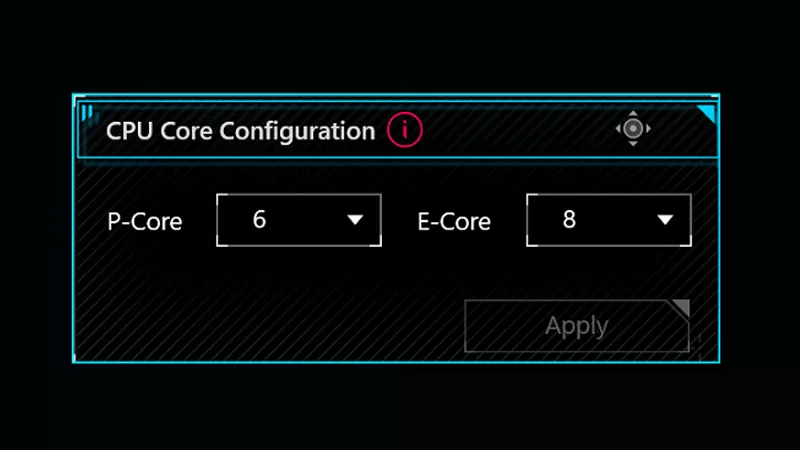
How to adjust your laptop's P-Cores and E-Cores for better performance and battery life
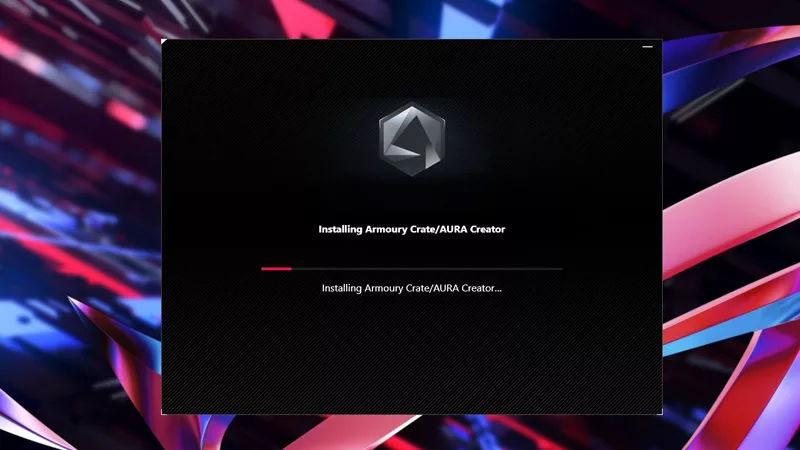
How to Cleanly Uninstall and Reinstall Armoury Crate
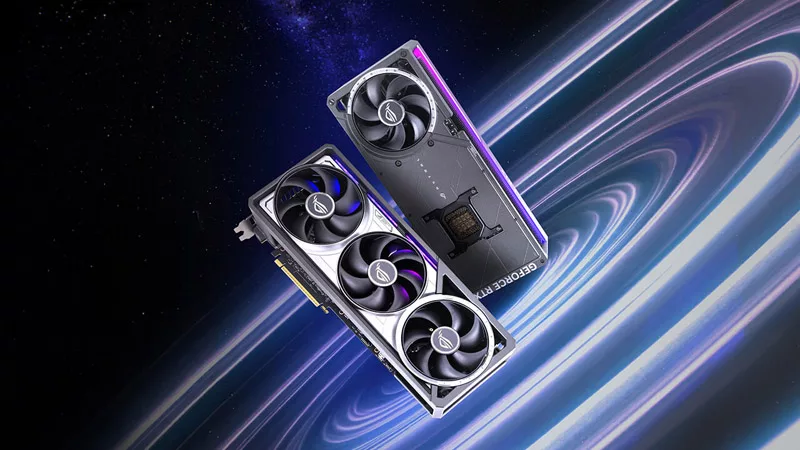
Introducing the ROG Astral GeForce RTX 5090 and 5080: a new frontier of gaming graphics
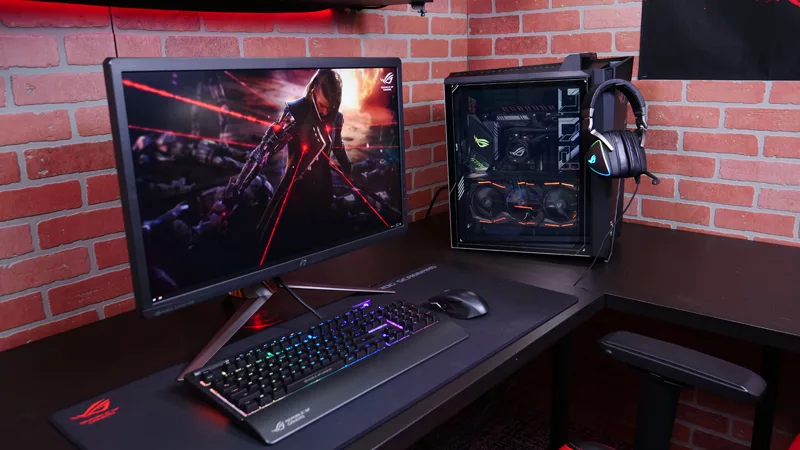
How to configure your PC's RGB lighting with Aura Sync
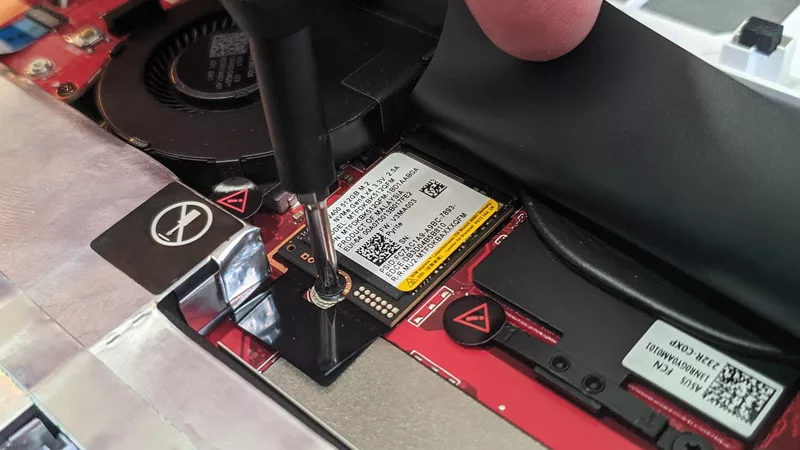
How to upgrade the SSD and reinstall Windows on your ROG Ally or Ally X
LATEST ARTICLES
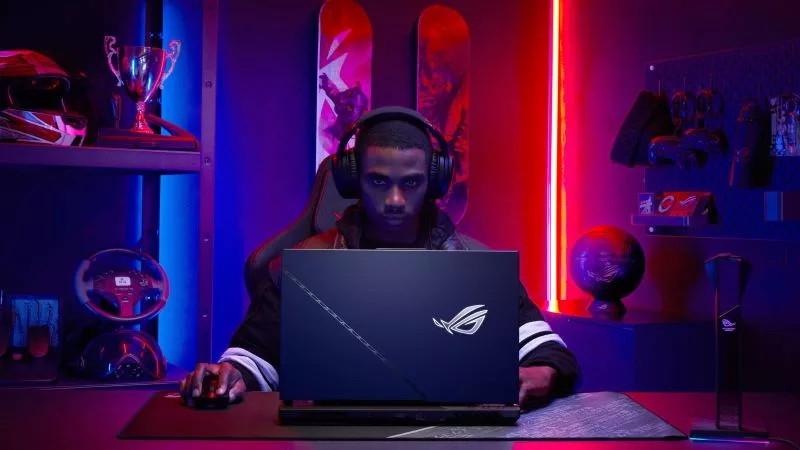
Supercharge your play with the new ROG Strix SCAR 17 X3D
For the first time, we’re proud to announce that 3D V-Cache has come to an ROG laptop to create one of the most powerful gaming laptops in existence. Meet the ROG Strix SCAR 17 X3D.
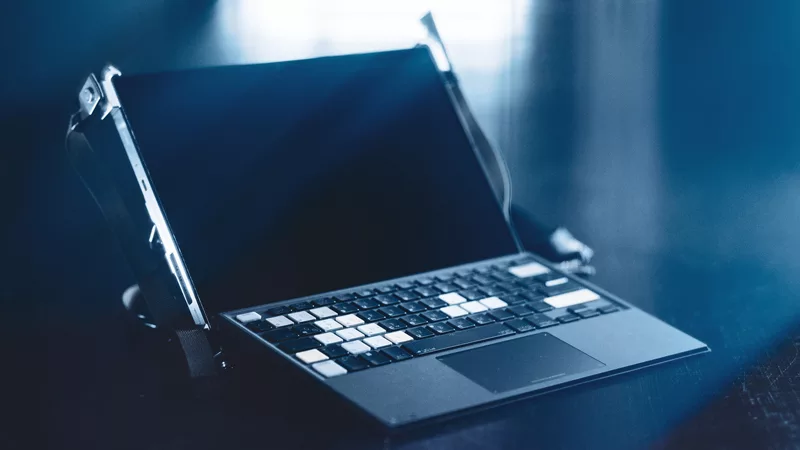
ROG and ACRONYM collaborate once again to reshape the future of mobile computing
ROG and renowned technical apparel firm ACRONYM have joined forces again to leverage their design expertise for an all-new project.
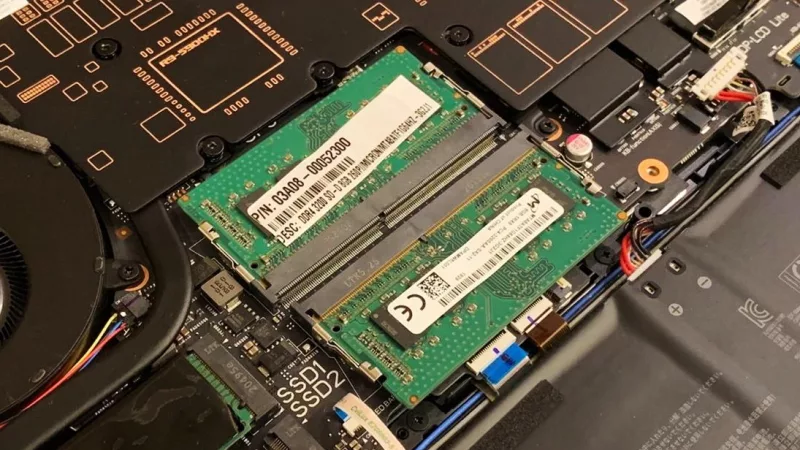
RAM chips are changing. Here's how 2021 ROG laptops are affected
It takes more than a few benchmarks to tell the whole story.
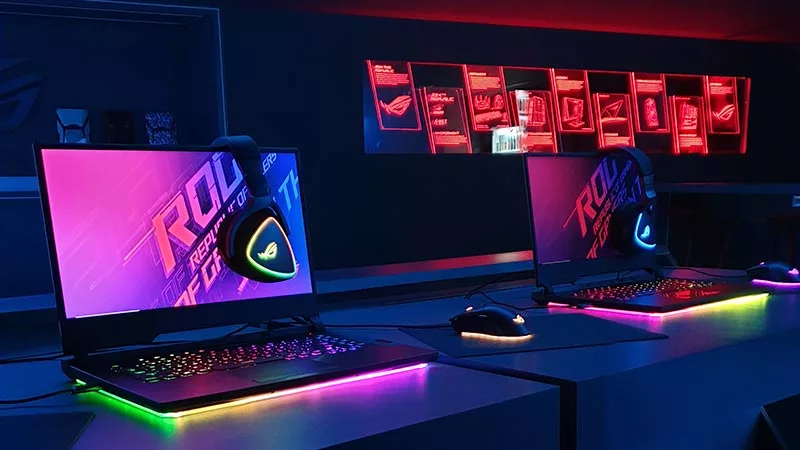
ROG reveals the first 300Hz gaming laptops at IFA Berlin 2019
Our display leadership continues at IFA 2019 with demos of the fastest gaming laptop panels in the world.
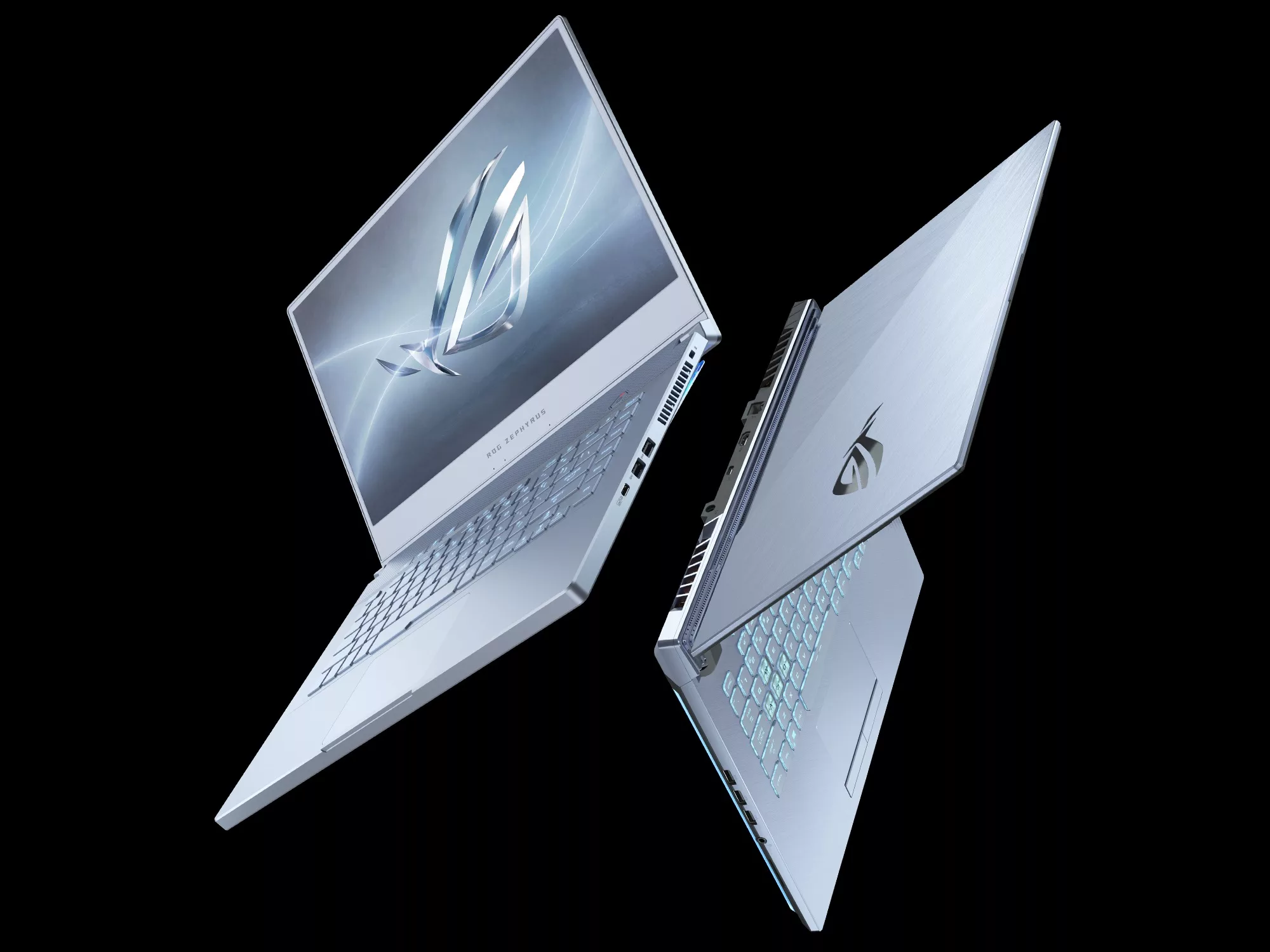
New ROG Zephyrus and Strix laptops chill out in Glacier Blue
Out with the black and in with the blue. See the cool new color we're bringing to gaming laptops.
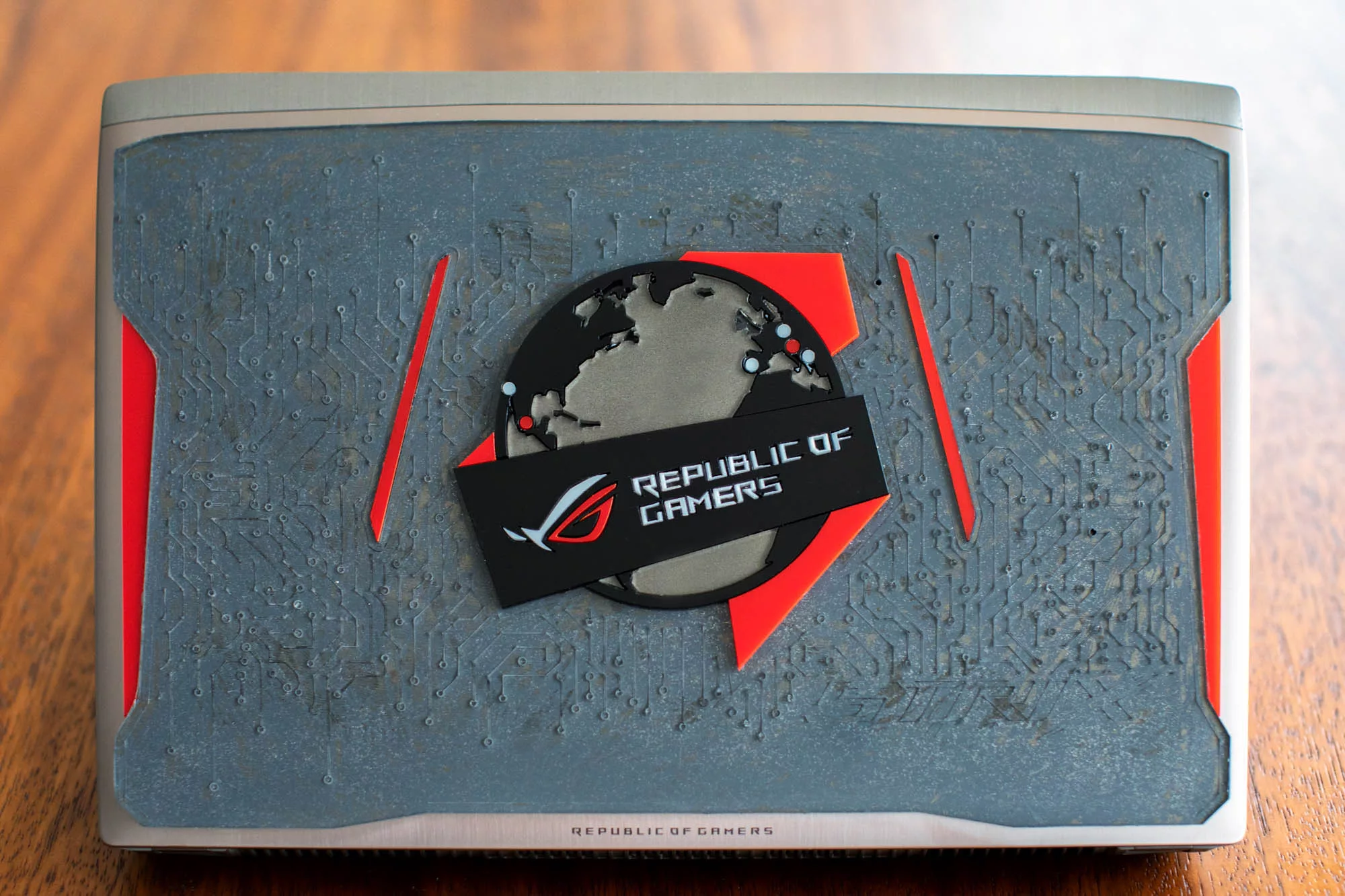
Celebrating the globetrotting ROG Strix GL502VS with Mexico’s makerspace movement
We take an inside look at Mexico's quickly growing makerspace movement, including 3D printing ROG case mods and designing our very own custom GL502VS cover.

